|
Leisure Management - Vietnamese vision

Country focus

|
|
| Vietnamese vision
|

We consider the opportunities and challenges for tourism and spa businesses in Vietnam, one of the emerging CIVETS economies
|

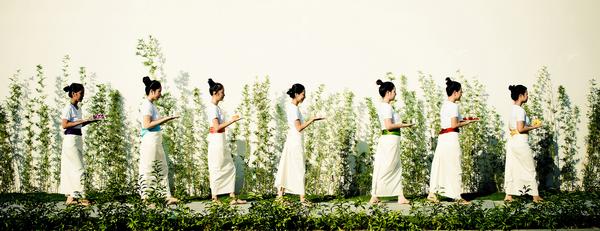
Resort and hotel spas, such as Fusion Maia Da Nang, bring in
86 per cent of sector revenue
|
|
|
“The tourism sector has been a major factor in job creation, economic development and poverty alleviation in Vietnam, leaving no doubt that it’s played a crucial role in our country’s overall socioeconomic progress.” When Vietnam’s state vice-president Nguyen Thi Doan addressed the World Travel & Tourism Council last year, she wasted little time in underlining the significance of tourism to her nation. Having accounted for 4.5 per cent of GDP in 2012, forecasts predict a per annum increase of 6.7 per cent until 2023. With its stunning natural landscapes, cultural riches, hospitable people and a favourable climate, it’s easy to see why Vietnam is ranked among the top three emerging tourism destinations worldwide. A civets economy
The country’s tourism growth feeds into a larger picture; one that has seen Vietnam positioned as one of Asia’s most exciting economic prospects behind China. Indeed since financial and political reforms – termed as doi moi (or restoration) – were initiated in 1986 to facilitate the transition from a centralised planning system to a multi-sector market economy, Vietnam has posted annual per capita growth of 5.3 per cent, according to McKinsey. Throughout the 90s the country became a global investment darling and in 2007, the same year it joined the World Trade Organization, it attracted more foreign direct investment than the majority of other Asian tiger economies. The factors that underlined this success varied from a young, flourishing labour force to a notable shift from agriculture into manufacturing and service-based industries. Vietnam’s reputation as an enticing investment market was further cemented when the Economist Intelligence Unit identified it as a CIVETS nation in 2009. An acronym championed by former HSBC chief executive Michael Geoghegan, CIVETS encapsulates six countries – Colombia, Indonesia, Vietnam, Egypt, Turkey and South Africa – all of which have been earmarked as the new batch of emerging economic powerhouses, following in the footsteps of BRIC countries. Speaking of the CIVETS, Geoghegan has observed: “Each has a large, young, growing population. Each has a diverse and dynamic economy. And each, in relative terms, is politically stable.” Yet Vietnam’s economy has, more recently, lost some of its roar due to concerns about inflation, bad bank debts, falling foreign investment and corruption scandals among its state-owned enterprises. This meant that in 2012 the country’s growth slowed to its weakest pace in 13 years, with GDP increasing by only 5.03 per cent. In April 2013 the IMF then lowered Vietnam’s growth projections into 2014, raising questions about the ruling party’s ability to reform the fragile banking system and state-owned firms that dominate the economy. Silver Linning
Among these gathering clouds, the tourism sector has remained a bright spot on the horizon. Figures from the Vietnam National Administration of Tourism showed that international arrivals reached over 6.8 million in 2012 – a 13.8 per cent increase over 2011. China, South Korea and Japan were the top source markets, confirming the trend for travel originating from other Asian countries. Factor in the additional 32.5 million trips made domestically and overall tourism turnover reached VND162 trillion (US$7.7bn, €5.8bn, £5bn) last year. With a strategy that seeks to secure private and public investment of VND1.9 quadrillion (US$94.2bn, €71.6bn, £70bn) for tourism infrastructure between 2011 and 2030, it’s expected that this sector will be a key national industry within the decade. Accordingly, targets have been set for 10.5 million international arrivals and 48 million domestic trips by 2020, with forecasted revenues rising to VND392 trillion (US$18.5bn, €14.1, £12.2bn), for the year. Set against this landscape, the VND3.1 trillion (US$144m, €109.5m, £94.7m) generated by spa tourism in 2012 can be considered a relative drop in the ocean. But Euromonitor International’s 2012 Health and Wellness Tourism in Vietnam report predicts this sector will achieve a compounded annual growth rate of 16 per cent over the next five years. Hospitality influence
From the Euromonitor report, which compares revenues of hotel and resort spas (86 per cent) versus other spas (14 per cent), it’s clear that wellness tourism is driven by hospitality operations: “The healthy growth of hotel and resort spas shows that more consumers prefer to go to premium facilities in spite of higher prices as they provide professional services and trusted products.” Key purchasers, it says, are middle- and upper-income consumers and foreign tourists who enjoy Vietnam’s low-priced spa services. Other spas are typically operated by small independent players, with varying service quality due to loose government management. Not surprisingly, it’s resort and hotel development that will underpin expansion, rather than local businesses. While awareness is still limited among the country’s upper and middle-classes, Euromonitor predicts that more Vietnamese will become interested in spa “thanks to the greater exposure of western culture in the country.” Although estimates for the country’s middle-class vary – KPMG suggests 14.6 million of the 88-million total while McKinsey reports over 7 million – it’s universally acknowledged that these consumers are a growing force, interested in spending their money on products and leisure. This presents an interesting opportunity for hotel brands incorporating major spas in cities such as Hanoi and Ho Chi Minh. Outside Vietnam’s two main urban hubs, coastal regions make natural homes for spa resorts, and new locations include Asian Coast Development’s integrated Ho Tram Strip project in southern Vietnam, which will accommodate five different resorts with spa offerings after its completion in 2020. In the following pages, we delve into three different Vietnamese spa businesses to see how they’re faring in the market.
|
|

|
CENTRAL PROMISE

One of the most significant destinations for spa tourism in Vietnam is the Central Coast region surrounding Da Nang. And one of the most innovative hospitality operations is Fusion Maia Da Nang, operated and developed by Serenity Holding. Opened in October 2010, the 87-villa beachside resort is expected this year to reach occupancy levels well in excess of the 65 per cent achieved in 2012, due in large part to its distinctive all-inclusive spa concept.
Spa manager Natalie Devoy says: “All guests are entitled to two treatments a day as part of their room rate and if we have availability, we’ll accommodate more. As a result, our spa has a near-100 per cent capture rate.”
Comprising 16 treatment rooms, two salons, changing rooms, steam, sauna, whirlpool, yoga room and a library, the spa offers an extensive menu of treatments. Guests who sign up to a seven-day Natural Living Programme also have access to holistic activities, such as t’ai chi lessons on the nearby Marble Mountain. Manned by a team of 80 during high season, the spa required the development of a bespoke software system by South African based ESP Online to cope with the mind-boggling number of treatments – up to 40 per hour, with the spa operational 12 hours per day.
Founders of Serenity Holding, Louk Lennaerts and Marco van Aggele, hit upon the idea as a way of differentiating their resort. “It took a while to educate people about our all-inclusive spa offer and we did a lot of marketing, bringing media, travel agents and sales reps to experience the resort,” explains van Aggele, the group’s CEO. “For us it’s always been important to look beyond the bottom line. We realised that if we accounted for the costs of four treatments per day – electricity, oils and the therapist’s time – into our room rate, we could then offer a slightly higher resort rate than our competitors but still be perceived as great value.”
Built for VND254.5bn (US$12m, €9.1m, £7.9m), Fusion Maia Da Nang is the very definition of laid-back five-star luxury without the premium price tag. Offering added value, whether this is through all-inclusive spa or all-inclusive culinary activities, is a common factor of all Fusion Resorts, including the upcoming Fusion Maia Phu Quoc and Fusion Alya Hoi An, both of which will be unveiled in Vietnam this year.
Van Aggele explains that the group’s residential units are an attractive proposition for wealthy Vietnamese, who are restricted from investing overseas, and therefore turn to property development at home. “The Vietnamese like to own luxury resorts where they can invite their friends and family,” he observes. “This means it’s easier to find partners to invest in five-star concepts than those at the three-star level.”
Serenity Holding has developed a vertically integrated model in which it conceives, designs, builds and operates its own properties, usually in partnership with Vietnamese-based investors. The dynamic team has become accustomed to the idiosyncrasies of the Vietnamese system. “If you have the ability to build something, you don’t have to wait years for a construction licence; you simply call the government office and set up a meeting,” van Aggele continues.
For van Aggele, the country’s warm and playful people are its greatest asset. Yet without an inherent spa culture, like in Thailand or Bali, finding therapists for Fusion Maia Da Nang spa was no easy task, with members of the resort team having to travel into the local town and personally spread the word about the opportunities. “We found it difficult to find therapists with the required skill set so we decided to focus on recruiting people who had the right personality, and provide full training instead,” explains Devoy. “We’ve brought in specialist trainers in facials, yoga, reiki, spiritual hospitality, ayurveda and trigger therapy to teach all our therapists, who each undergo at least two months of training before starting work. In fact training is ongoing and we already have three reiki masters, for example.
“In Vietnam, there’s a still a stigma attached to working in a spa. Some families don’t wish their daughters to take jobs as they’re worried a spa is the equivalent of a massage parlour or worse. But we’ve reassured families with our professionalism.”
| |
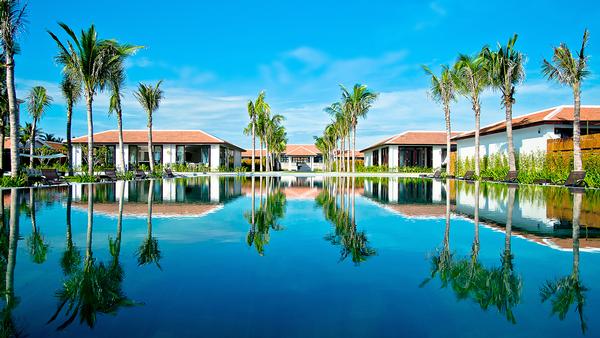

|

By 2014, there will be three Fusion sites in Vietnam |
| |
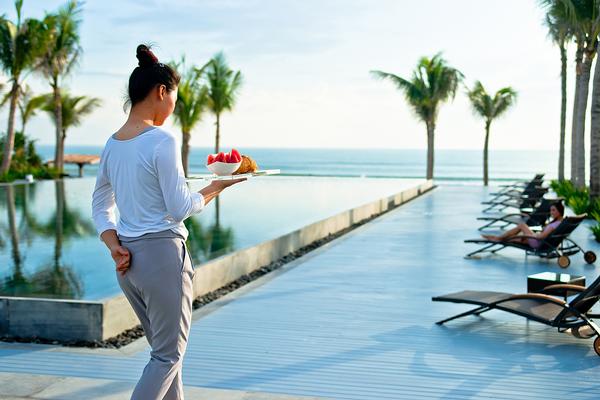

|
| By 2014, there will be three Fusion sites in Vietnam |
| |
| |
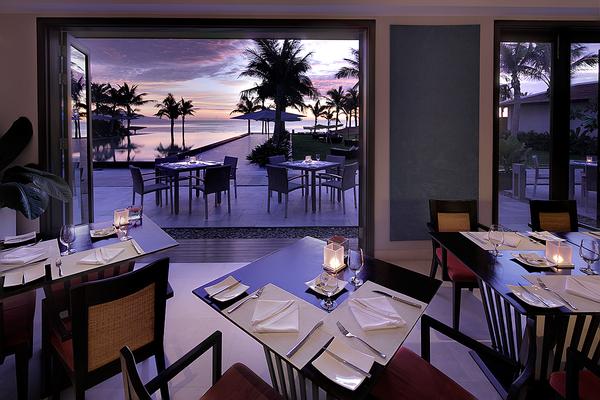

|
| The resort’s all-inclusive offer includes at least two spa treatments a day |
| |
| |
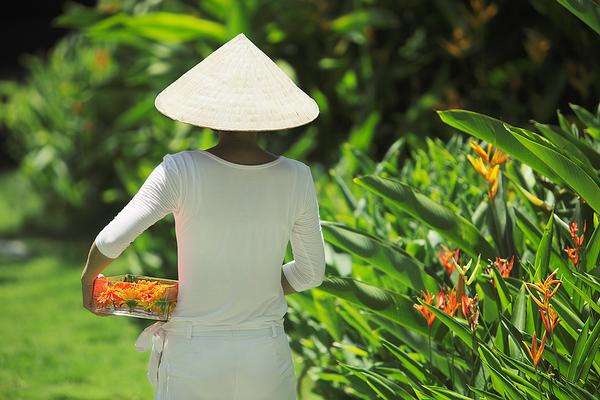

|
| The resort’s all-inclusive offer includes at least two spa treatments a day |
| |
| |
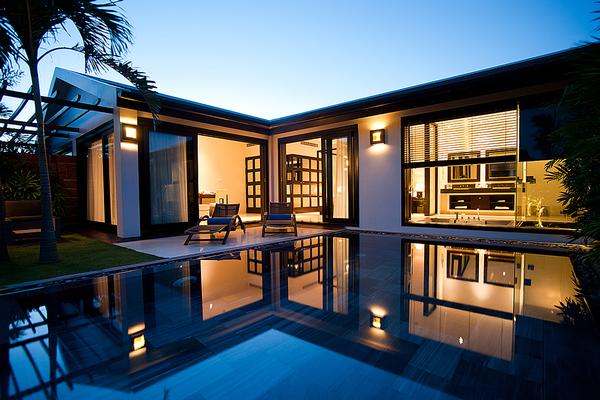

|
| The resort’s all-inclusive offer includes at least two spa treatments a day |
| |
|

|
INTEGRATED RESORT DEBUTS

The Central Coast region recently diversified its tourism offer with the launch of Vietnam’s first and largest integrated resort, a 280-hectare (692-acre) development that will eventually be home to six luxury hotels. For its VND4.2 trillion (US$200m, €152.1m, £131.4m) opening phase Laguna Lang Co, situated in Thua Thein Hue province, accommodates a 49-villa Banyan Tree retreat and 229-bedroom Angsana resort, both with sizeable yet distinctive spas.
Developed through the Banyan Tree Indochina Hospitality Fund and operated by Banyan Tree Holdings, the verdant site, which formerly could only be approached by sea, has been thoughtfully designed by Architrave Design and Planning Services to maximise the beauty of its natural bay setting, nestled between a pristine beach and forested mountain landscape. It is Banyan Tree Group’s first foray into Vietnam, both as a developer and operator, and reflects the ethos of Laguna Phuket – the group’s pioneering integrated resort established in Thailand 25 years ago.
“Our owner has been interested in Vietnam for some time and this area provided space in abundance,” explains Laguna Lang Co’s managing director Ravi Chandran, who’s also the group’s head honcho of spa operations (see SB11/2 p26). “This is beyond the typical resort experience in the area – we have a plethora of activities from our world-class spas to our Nick Faldo golf course, local tours to adventure and water sports.” As is common with the majority of foreign owners, Banyan Tree has secured a long-term lease for the land, on which it has introduced infrastructure and environmental improvements. Fostering a close relationship with the local government of Hue Province during master planning has been key. “It’s been essential to work with the local government,” confirms Chandran. “We’ve found them to be very accommodating in recognition of the investment and job wealth that we’ve brought to a relatively poor province.” While Chandran acknowledges that state bureaucracy means there are extra hoops for foreign owners to jump through, he sees little difference in operating in Vietnam compared to other emerging Asian economies in which the group is active.
While Australians, Americans, Brits and Germans are expected to be important western feeder markets, the group is focusing marketing efforts on ASEAN countries and, of course, China. “Vietnam is no longer a destination just for European travellers,” Chandran observes. “There’s a lot of wealth around in Asia and this region is ideal for Chinese, Singaporeans and Hong Kong residents wanting a long weekend away. We need more direct flights to bring traffic to Da Nang but we have an international airport so I don’t see this being an issue over time. We think this destination has the potential to be the next Phuket or Bali.”
The Vietnamese, too, are a key target market and membership to the on-site country club, which includes discounts on spa services, is aimed at affluent residents of towns such as Hue and Da Nang, as well as weekend trippers from Hanoi. Indeed the local party secretary is a regular visitor to the golf course.
One of the group’s biggest commitments has been to the training of local staff across the resort. Despite having to start from scratch in some cases, including teaching basic English and hospitality skills, Banyan Tree has committed to sourcing 70 per cent of staff from the local provinces and the remaining 30 per cent from across Vietnam.
In terms of the Banyan Tree and Angsana Spas – comprising a facility of six spacious, stand-alone spa pavilions and a 10-treatment room complex respectively, both of which aim for a 20 per cent capture rate – Chandran says there has been no temptation to lean on Thai or Balinese therapists. The group has recruited heavily in Vietnam instead, with therapists enrolled in its Banyan Tree Spa Academy training programme.
| |
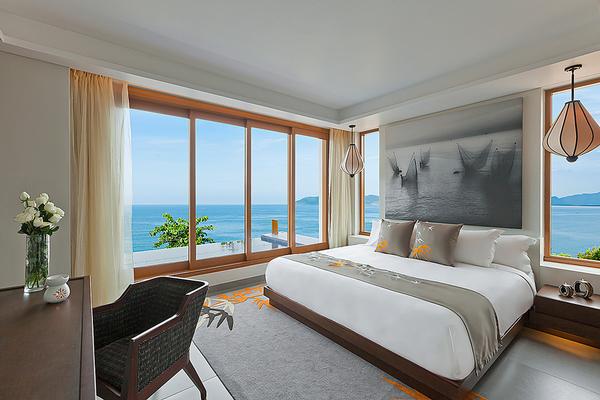

|

The 692-acre Laguna Lang Co, by Banyan Tree, is Vietnam’s first integrated resort |
| |
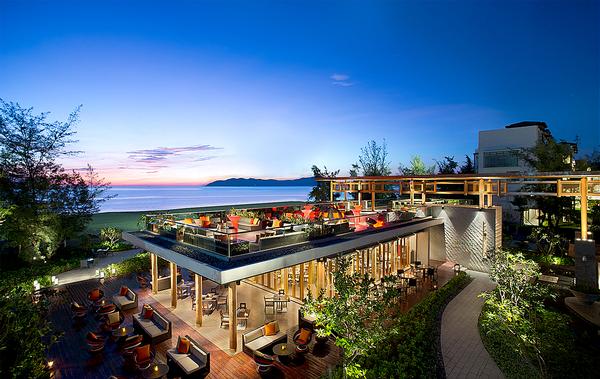

|
| The 692-acre Laguna Lang Co, by Banyan Tree, is Vietnam’s first integrated resort |
| |
| |
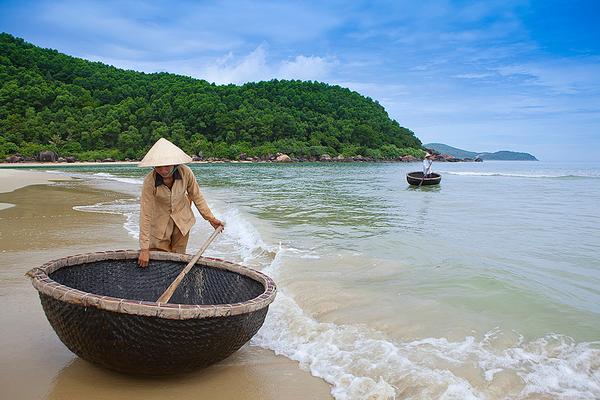

|
| The 692-acre Laguna Lang Co, by Banyan Tree, is Vietnam’s first integrated resort |
| |
| |
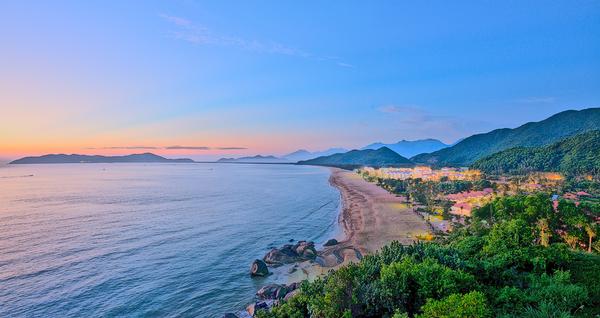

|
| The 692-acre Laguna Lang Co, by Banyan Tree, is Vietnam’s first integrated resort |
| |
| |
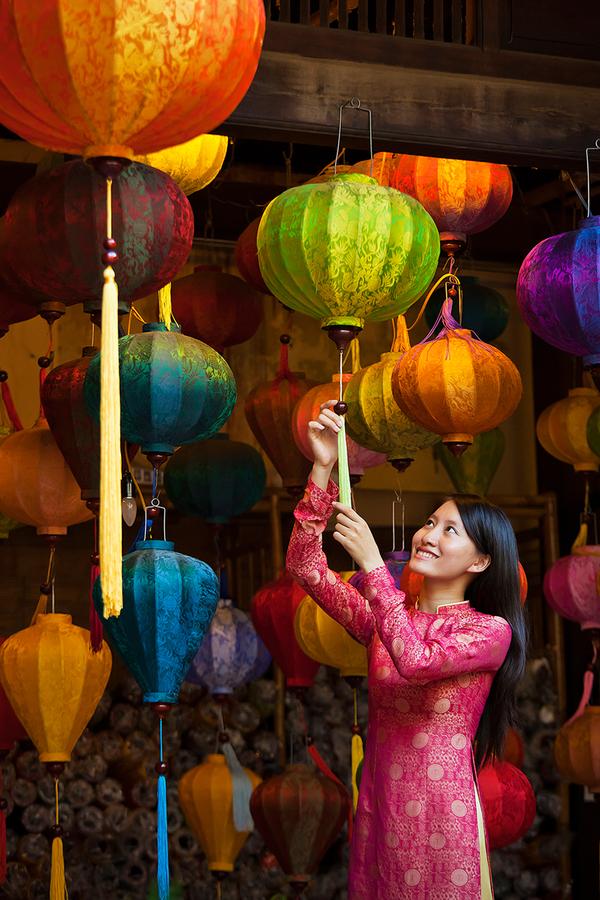

|
| Banyan Tree thinks Vietnam has potential to be the next Phuket or Bali |
| |
|

|
INVESTING IN PEOPLE

As one of the first five-star spa resorts on the Central Coast, the GHM-operated The Nam Hai, Hoi An, set a new benchmark in luxury service when it opened in 2006. Almost 600 people are employed at the 35-hectare (86-acre) site, which features 100 guest villas. With staff benefits such as daily English training, provision of food, uniform and transportation, combined with a share in the service charge, The Nam Hai has high staff retention levels. On average, employees stay with the company for 4.5 years. Still general manager Anthony Gill points out that immediate investment is required at the national level for hospitality management schools, especially as Vietnamese school leavers tend to have poor English.
Reflecting the national picture, The Nam Hai has a strong emphasis on leisure-driven tourism, with German-speaking nations, the British, French, Americans and Australians comprising top source markets. Since Vietnamese travellers are experience-driven, often preferring to try new things, they don’t typically return to the same destination. While the resort does cater for small, high-level business groups from overseas, Gill says the corporate and MICE segments are relatively limited in Vietnam.
After rooms, the Spa at The Nam Hai represents the resort’s most profitable centre. Comprising eight stand-alone spa villas, the facility was named Best Overseas Spa Hotel at Condé Nast Traveller’s Readers’ Travel Awards in 2012. Rigorous training, cleanliness, service and design standards have been set by GHM’s director of spas, Brenda Ramen, who’s based in Singapore but visits at least four times a year to test treatments and ensure touch points are consistent. Spa manager Desak Ambarwati says she has little difficulty in recruiting staff because of the resort’s reputation. Instead the spa’s biggest challenge is to maintain occupancy during the low season (June, September-November), during which time value-added promotions are offered to resort guests. The Nam Hai works with a specialist local consultant who handles the importing of its premium spa, cosmetics and toiletries ranges because complex Vietnamese regulations can make the process labour-intensive.
Looking forward, Gill sees potential in a region that has benefitted from governance by party leaders who are both progressive and anti-corruption. This makes the Central Coast, which is forecast to welcome 3 million visitors this year, an attractive proposition for hospitality groups.
As reputed spa brands, such as Thailand’s Harnn based at the new InterContinental Danang Sun Peninsula Resort, land in the vicinity, there’s no doubt world-class spa facilities are contributing to the diversification and enhancement of the offer in a destination that is one of the flagships of Vietnamese tourism.
| |
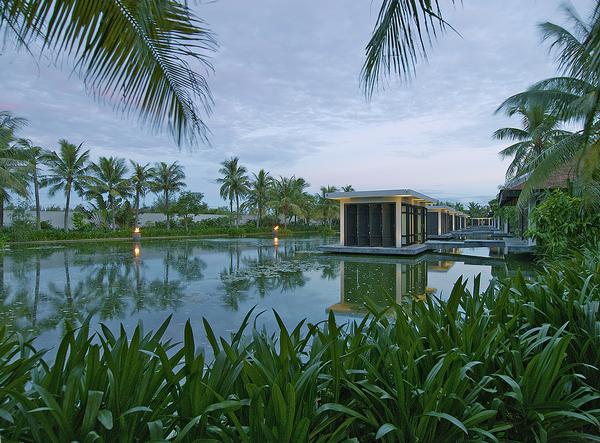

|

The GHM-operated site has eight stand-alone spa villas |
| |
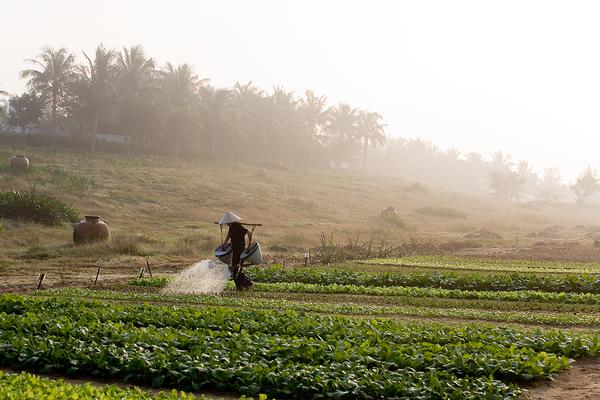

|
| With generous staff benefits, the 600 employees stay for up to 4.5 years |
| |
|
 |

Promoting central Vietnam |
 |
The Central Coast Vietnam (CCV) Destination Marketing Organisation, has been formed by private stakeholders with a vested interested in the growth of tourism in region spanning Da Nang, Hoi An, Hue and My Son Sanctuary.
Its aim is to raise the region’s profile, says chair Louk Lennaerts: “CCV is a beach destination, with cultural and entertainment values, not just a place for a short stopover. By using the network of contacts shared by our members, we intend to tell the story that CCV is the new alternative to Bali and Thailand.
“Our focus is on cooperation with airlines to ensure more direct flights from hubs such as Korea, Hong Kong and Singapore. We’re also seeking direct connections from gateways including Bangkok, China and Australia, to open up new markets.
“Spa has a part to play and as new concepts are developed, this will help to introduce an image of Vietnam as a wellness destination.”
Currently at the start-up phase, Vietnam’s first spa association will focus on international standards, training and collaboration
|
|
 |

Fledgling spa association |
 |
Spearheaded by Fusion Resorts and other spa operators, plans are afoot for Vietnam’s first spa association, with membership slated to be open to facilities across the country. Currently at the start-up licensing phase, the association intends to focus on international standards, training and collaboration. A spa school is expected to follow in phase two, but this will be closely linked to Fusion Maia Da Nang resort.
|
|
 |
| Originally published in Spa Business 2013 issue 3
|
|
 |
|
 |
| Digital magazine |
 |
|
|
|
|
|